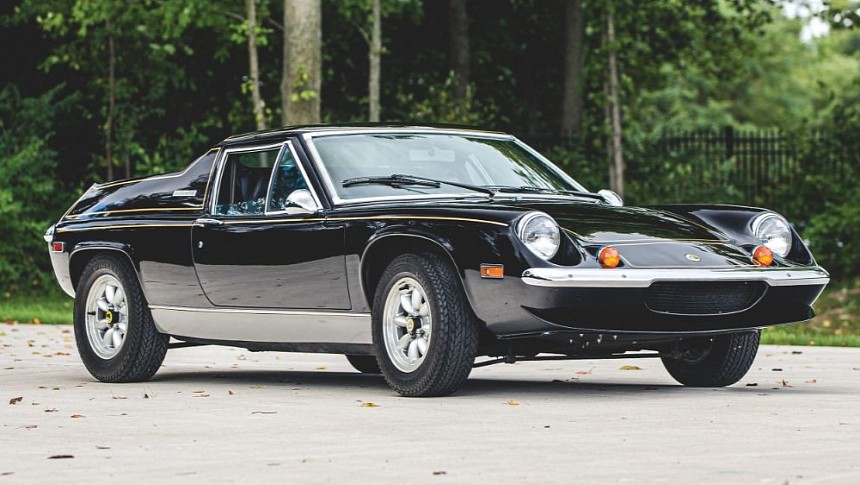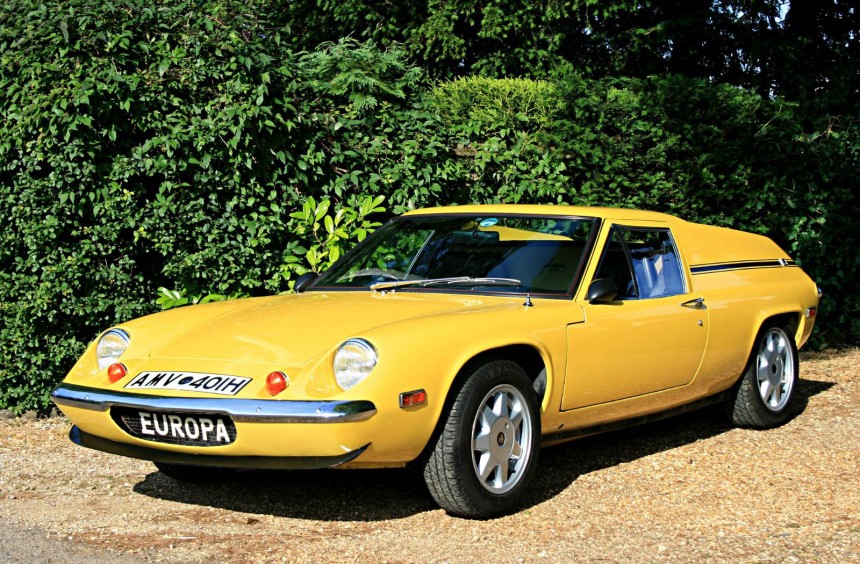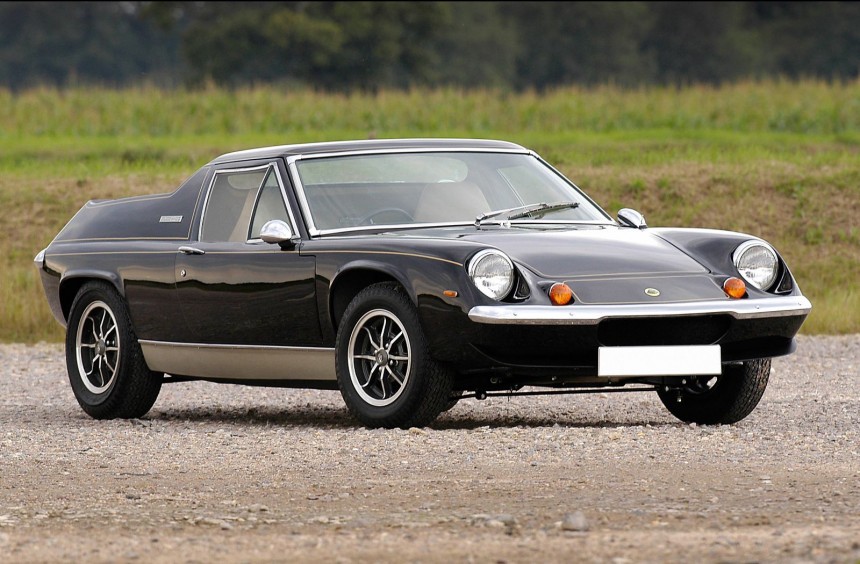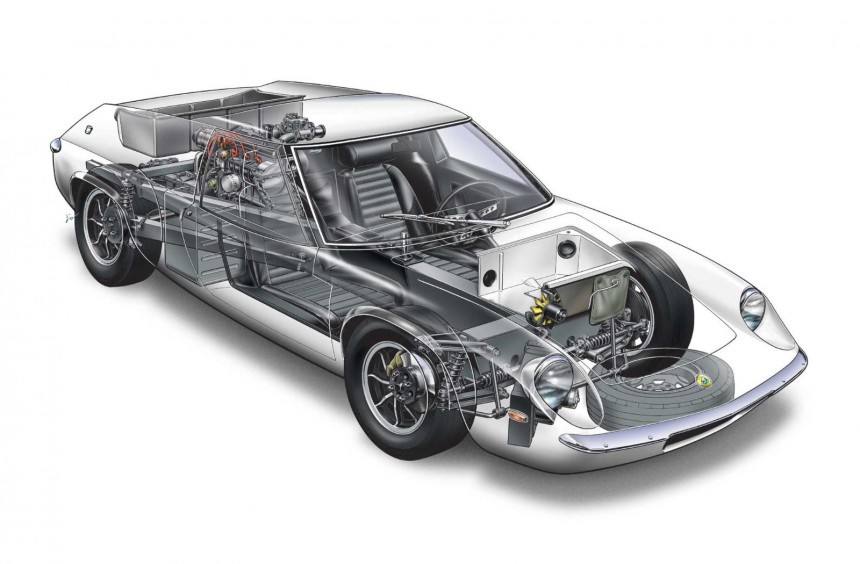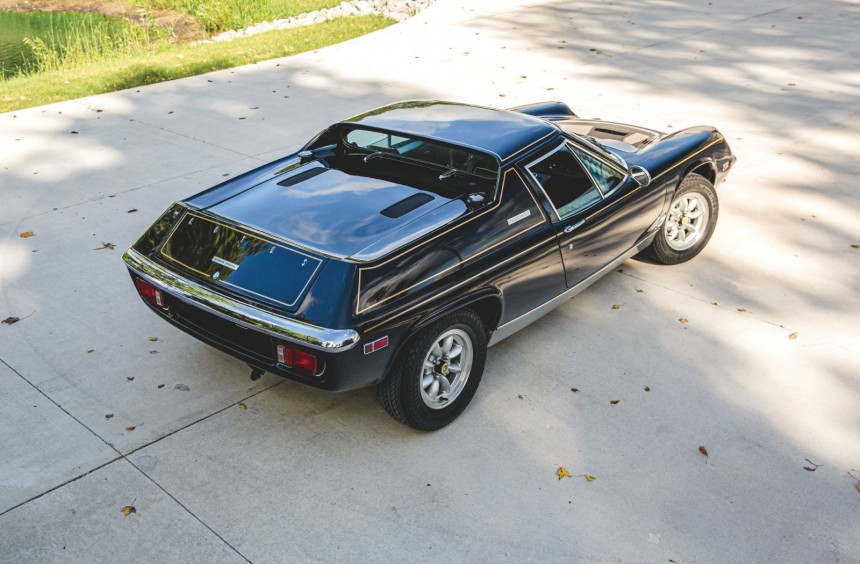Although it resembles a low-slung delivery vehicle, the ultra-lightweight, mid-engine Europa is one of the greatest driver's cars ever built.
For most enthusiasts today, a great driver's car must have a powerful engine, a good suspension tune, and eye-catching looks.
During its glory years, Lotus proved that the ultimate driver's car recipe didn't need ingredients like power or looks but could be cooked up by keeping things as simple and lightweight as possible.
With this philosophy, the British company founded by engineering legend Colin Chapman in 1948 became one of the world's most respected sports car manufacturers and one of Formula 1's most prominent constructors in just a couple of decades.
As you all know by now, thanks to the Hollywood blockbuster Ford v Ferrari, a delegation headed by the Blue Oval's Vice President Lee Iacocca traveled to Italy to negotiate the purchase of the famous carmaker. But, as it turned out, Enzo Ferrari never wanted to sell his company to the Americans and used the opportunity to get a better deal from Fiat.
The collapse of the deal angered Hank the Deuce (Henry Ford II), who decided to start an ambitious project aiming to end Ferrari's dominance in the greatest race of them all, the 24 Hours of Le Mans. However, Ford lacked the know-how to build a thoroughbred endurance race car from scratch, so it turned to Europe's finest for help.
Lotus was among the companies that submitted a design proposal for what became known as the GT40 project. Ron Hickman sketched the mid-engine sports car concept with valuable input from Collin Chapman, who designed most of its underpinnings. Unfortunately for Lotus, Ford went in a different direction, choosing Lola's Mk 6 as the building block for its Le Mans race car.
It was built around a boxed-steel backbone chassis similar to that of the compact Elan, but the structure was split into a U shape towards the rear to accommodate the powertrain. It featured a fully independent suspension system with double wishbones up front, while the rear end used the innovative Chapman strut setup initially designed by the company's founder for Grand Prix race cars.
The body was built from fiberglass panels, and initially, these were bonded to the chassis for increased rigidity. However, later models used bolt-on panels to make it easier for owners to service the car. Overall, the car looked pretty weird, yet the body had a drag coefficient of 0.29 – one of the lowest of any production car of the 1960s.
Introduced in 1966, the Europa was among the first mid-engine production cars in the world, and with a curb weight of around 1,400 lbs (635 kg), it was also one of the lightest.
The Lotus boss saw the powertrain as perfect for the Europa and struck a deal with Renault to use it. However, there was a slight problem. In the 16, the four-cylinder engine and transaxle drove the front wheels, so if he rotated the powertrain by 180 degrees and placed it in the middle of the backbone chassis, the car would have four reverse gears and just one to go forward. Luckily, the transmission had a symmetrical split case, and the problem was solved by repositioning the differential crown wheel.
Chapman and his team of engineers upgraded the engine by installing larger inlet valves, dual valve springs, and a twin-barrel carburetor. Thus, the output increased from 63 to 82 hp, which enabled the car to "sprint" to 60 mph (97 kph) in a modest 9.3 seconds and reach a top speed of 120 mph (195 kph).
Even back then, this wasn't particularly impressive, especially for a sports car, but the Europa still delivered an exciting driving experience. The motoring press had nothing but praise for the new Lotus that handled impeccably and felt much quicker than it actually was. Moreover, it was fuel-efficient, achieving around 30 mpg (9.4 liters/100 km), and with a minimalist construction, it was easy to maintain.
While the Series 1 and Series 2 cars were only available with the Renault engine, the early-1970s saw the introduction of the Twin Cam and Special editions of the Europa. These cars were powered by the race-bred Lotus-Ford Twin Cam engine, an inline-four that could produce between 105 and 126 hp, depending on the exact model.
Thus, a well-kept, low-mileage S2 can be had for around $15,000, while the average value for the more desirable, Twin-Cam models stands around the $30,000 mark.
Although it's not as popular as other sports cars from the same era, the Lotus Europa remains one of the most thrilling driver's cars ever built. Considering its current value, it's also a bargain if you're looking for an iconic classic.
If you want to learn more about this brilliant little car and see how it behaves on a winding road, I recommend watching the YouTube video below by JayEmm on Cars.
During its glory years, Lotus proved that the ultimate driver's car recipe didn't need ingredients like power or looks but could be cooked up by keeping things as simple and lightweight as possible.
With this philosophy, the British company founded by engineering legend Colin Chapman in 1948 became one of the world's most respected sports car manufacturers and one of Formula 1's most prominent constructors in just a couple of decades.
Designing a concept for the Blue Oval's Le Mans program
The collapse of the deal angered Hank the Deuce (Henry Ford II), who decided to start an ambitious project aiming to end Ferrari's dominance in the greatest race of them all, the 24 Hours of Le Mans. However, Ford lacked the know-how to build a thoroughbred endurance race car from scratch, so it turned to Europe's finest for help.
Lotus was among the companies that submitted a design proposal for what became known as the GT40 project. Ron Hickman sketched the mid-engine sports car concept with valuable input from Collin Chapman, who designed most of its underpinnings. Unfortunately for Lotus, Ford went in a different direction, choosing Lola's Mk 6 as the building block for its Le Mans race car.
The birth of the Europa
Despite this, Hickman's concept didn't go to waste and became the first mid-engined, road-legal Lotus to enter production. Christened Europa and developed under the codename Type 46, the new car was conceived as a more advanced alternative to the open-wheel Seven, the company's most popular model.
It was built around a boxed-steel backbone chassis similar to that of the compact Elan, but the structure was split into a U shape towards the rear to accommodate the powertrain. It featured a fully independent suspension system with double wishbones up front, while the rear end used the innovative Chapman strut setup initially designed by the company's founder for Grand Prix race cars.
The body was built from fiberglass panels, and initially, these were bonded to the chassis for increased rigidity. However, later models used bolt-on panels to make it easier for owners to service the car. Overall, the car looked pretty weird, yet the body had a drag coefficient of 0.29 – one of the lowest of any production car of the 1960s.
Introduced in 1966, the Europa was among the first mid-engine production cars in the world, and with a curb weight of around 1,400 lbs (635 kg), it was also one of the lightest.
Proving that a sports car can be great without a big, powerful engine
During initial development, Chapman learned that French manufacturers Renault just a new family-oriented hatchback dubbed 16. It was powered by a compact, lightweight, all-aluminum engine linked to a four-speed transaxle.
The Lotus boss saw the powertrain as perfect for the Europa and struck a deal with Renault to use it. However, there was a slight problem. In the 16, the four-cylinder engine and transaxle drove the front wheels, so if he rotated the powertrain by 180 degrees and placed it in the middle of the backbone chassis, the car would have four reverse gears and just one to go forward. Luckily, the transmission had a symmetrical split case, and the problem was solved by repositioning the differential crown wheel.
Chapman and his team of engineers upgraded the engine by installing larger inlet valves, dual valve springs, and a twin-barrel carburetor. Thus, the output increased from 63 to 82 hp, which enabled the car to "sprint" to 60 mph (97 kph) in a modest 9.3 seconds and reach a top speed of 120 mph (195 kph).
Even back then, this wasn't particularly impressive, especially for a sports car, but the Europa still delivered an exciting driving experience. The motoring press had nothing but praise for the new Lotus that handled impeccably and felt much quicker than it actually was. Moreover, it was fuel-efficient, achieving around 30 mpg (9.4 liters/100 km), and with a minimalist construction, it was easy to maintain.
While the Series 1 and Series 2 cars were only available with the Renault engine, the early-1970s saw the introduction of the Twin Cam and Special editions of the Europa. These cars were powered by the race-bred Lotus-Ford Twin Cam engine, an inline-four that could produce between 105 and 126 hp, depending on the exact model.
The Lotus Europa today
The mid-engine sports car was manufactured from 1966 to 1975 in 9,230 units. Since it was a terrific sports car that you couldn't help but fall in love with, many of these cars have been looked after by their owners and are still around today. However, it has been overshadowed by more powerful sports cars on the collector's market.
Thus, a well-kept, low-mileage S2 can be had for around $15,000, while the average value for the more desirable, Twin-Cam models stands around the $30,000 mark.
Although it's not as popular as other sports cars from the same era, the Lotus Europa remains one of the most thrilling driver's cars ever built. Considering its current value, it's also a bargain if you're looking for an iconic classic.
If you want to learn more about this brilliant little car and see how it behaves on a winding road, I recommend watching the YouTube video below by JayEmm on Cars.
